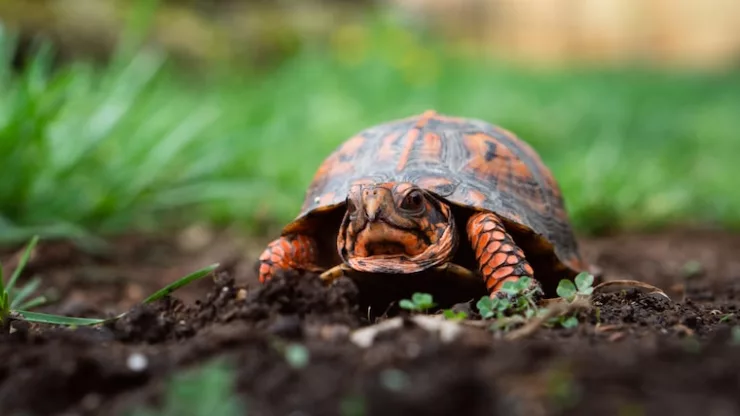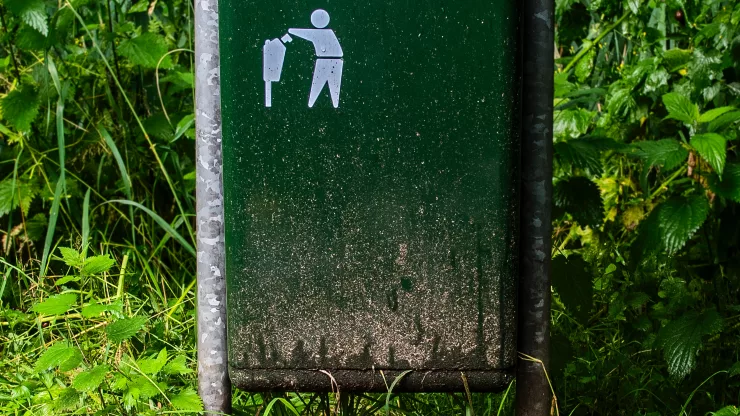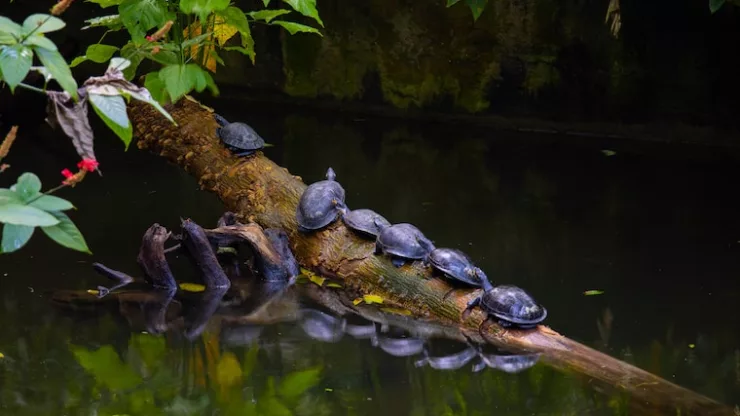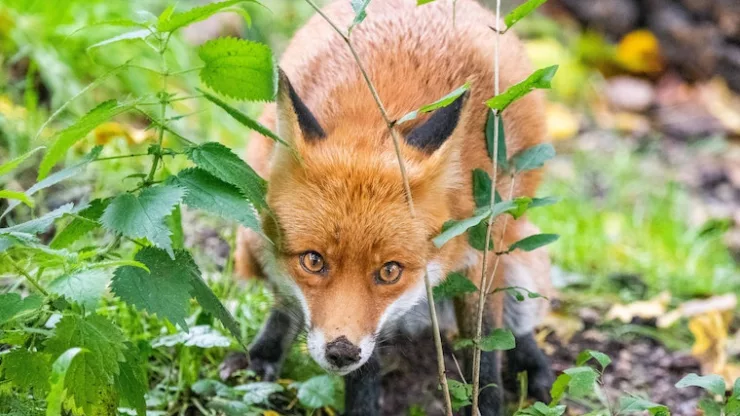As humans, we tend to think of cities as places for people and concrete jungles devoid of nature.
However, nature has a way of finding its way into even the most urban environments.
One surprising example of this is the presence of urban turtles in city parks.
These slow-moving reptiles may not be the first to come to mind when we think of city life, but they are an important part of the ecosystem in urban areas.
In this article, we will explore the lives of urban turtles, the challenges they face, and the conservation efforts being made to protect them.
Jump to Section
Introduction: Urban Turtles in City Parks
What Are Urban Turtles?
Urban turtles are species of turtles that have adapted to living in urban environments, specifically city parks.
These turtles can be found in a variety of different habitats within city parks, including ponds, streams, and wetlands.
Why Are They Surprising Residents of City Parks?
The presence of urban turtles in city parks may come as a surprise to many people, but this is largely due to our own preconceived notions about what urban environments are like.
In reality, many city parks provide suitable habitats for a variety of different species, including turtles.
The Importance of Studying Urban Turtles
Studying urban turtles is important for a number of reasons. First, it helps us to better understand how species adapt to living in urban environments.
Additionally, urban turtles can serve as indicators of the overall health of urban ecosystems, as changes in their populations can signal larger environmental issues.
The Lives of Urban Turtles
Habitat and Diet of Urban Turtles
Urban turtles can be found in a variety of different habitats within city parks.
Some species, such as the red-eared slider, prefer to live in ponds, while others, such as the eastern box turtle, can be found in wooded areas.
In terms of diet, urban turtles are omnivorous, meaning they eat both plants and animals.
Their diet may include insects, small fish, and vegetation such as grasses and leaves.
Reproduction and Nesting Habits of Urban Turtles
Like all turtles, urban turtles lay their eggs on land.
Female turtles will usually lay their eggs in a sunny, open area, such as a meadow or a clearing.
After laying their eggs, they will cover them with soil or vegetation in order to protect them from predators.
Adaptations of Urban Turtles to City Environments
Urban turtles have adapted to living in city parks in a number of ways.
For example, some species, such as the red-eared slider, are able to tolerate a wide range of water conditions, including those found in polluted urban waterways.
Additionally, some species have been observed nesting in urban gardens and other green spaces.
Challenges Facing Urban Turtles in City Parks
Habitat Loss and Fragmentation
One of the biggest challenges facing urban turtles in city parks is habitat loss and fragmentation.
As cities continue to grow, natural habitats are often destroyed or fragmented, making it difficult for turtles to find suitable places to live and breed.
Pollution and Contamination
Pollution and contamination are also major threats to urban turtles in city parks. Turtles are particularly vulnerable to water pollution, as they rely on clean water for survival.
In addition, pollution can also impact the availability of prey and vegetation, which are important food sources for urban turtles.
Human Interference
Human interference is another challenge facing urban turtles in city parks.
Turtles are often hit by cars when crossing roads, and they may also be disturbed by people and their pets.
Additionally, some species of urban turtles are collected and sold as pets, which can further deplete their populations.
Conservation Efforts for Urban Turtles in City Parks
Research and Monitoring Programs
Research and monitoring programs are essential for understanding the populations and behaviors of urban turtles in city parks.
These programs can help to identify threats to turtle populations and inform conservation efforts.
Habitat Restoration and Creation
Habitat restoration and creation are important for providing suitable habitats for urban turtles in city parks.
This may involve restoring wetlands, creating new ponds, or planting vegetation that is attractive to turtles.
Community Involvement and Education
Community involvement and education are important for raising awareness about the importance of urban turtles and the threats they face.
This may involve outreach programs, educational materials, and volunteer opportunities for people to get involved in conservation efforts.
Conclusion: Protecting Our Urban Turtle Residents
The Need for Continued Conservation Efforts
Urban turtles are a surprising and important part of city park ecosystems, and it is essential that we continue to protect them.
This involves addressing the threats they face, including habitat loss, pollution, and human interference.
The Role of Urban Turtles in City Ecosystems
Urban turtles play an important role in city park ecosystems, serving as indicators of environmental health and contributing to the overall biodiversity of these areas.
Appreciating and Protecting Our Urban Turtle Residents
Ultimately, it is up to all of us to appreciate and protect our urban turtle residents.
By working together, we can ensure that these fascinating creatures continue to thrive in our cities for years to come.
FAQ
What species of turtles can be found in city parks?
There are a variety of different turtle species that can be found in city parks, including the red-eared slider, eastern box turtle, and painted turtle.
How can I help protect urban turtles in city parks?
There are a number of ways you can help protect urban turtles in city parks, including:
- Not disturbing turtles or their nests
- Keeping pets on leashes and away from turtles
- Participating in conservation and restoration efforts in your local park
- Reducing pollution and litter in your community
Are urban turtles dangerous?
No, urban turtles are not dangerous to humans. In fact, they are generally shy and will avoid humans if possible.
However, it is important to give turtles their space and not disturb them, as they may become stressed or defensive if they feel threatened.
I’m a nature enthusiast and creator of Metro Wilds and have spent years exploring the great outdoors.
With a passion for environmental conservation and sustainability, I have dedicated my career to writing about the beauty and wonders of nature, as well as the threats facing our planet.
Contact me at [email protected] for assistance.





